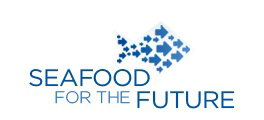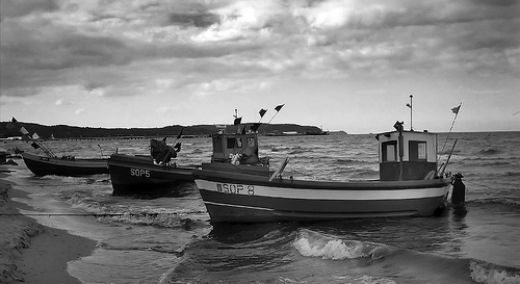
By Robert Johnson
November/December 2009
Give a man a fish and feed him for a day. Teach a man to fish and feed him for a lifetime. Teach too many people to fish and there is an issue with sustainability.
Sustainable means the ability to harvest or use a resource without causing depletion or permanent damage; especially important when harvesting food resources. Now, thanks to better technology and global awareness, more is being done to promote a safe, healthy and sustainable environment. Seafood is one resource which is currently under the microscope due to concerns which address both the environment and personal health. Industries are now seeking to make better choices for health-minded consumers’ increasing environmental conscience.
Many fear that oceanic ecosystems are declining and stocks of sea life used for consumption could be significantly reduced. This means that restaurants must be increasingly aware of where their seafood comes from in order to ensure it will be a tenable and viable resource for years to come. But who knows what questions to ask and to whom? As a restaurateur, do your servers know the difference between farm-raised and wild-caught seafood? Does the chef know if the fish was caught using gill nets or by other means? This kind of knowledge is needed in order to foster environmentally effective results.
 With their Seafood for the Future program, Aquarium of the Pacific is attempting to answer these questions. With the consumer in mind, this program identifies chefs and seafood suppliers who adhere to the best sustainability practices when procuring seafood. Participating restaurants display the Seafood for the Future icon (blue arrow shaped fish on a white background) next to menu selections which are in line with these practices.
With their Seafood for the Future program, Aquarium of the Pacific is attempting to answer these questions. With the consumer in mind, this program identifies chefs and seafood suppliers who adhere to the best sustainability practices when procuring seafood. Participating restaurants display the Seafood for the Future icon (blue arrow shaped fish on a white background) next to menu selections which are in line with these practices.
Misconceptions abound when it comes to proper methods for procuring seafood. Farmed fish may sound like a better option than wild-caught fish, assuming that farming implies a certain type of control over the stock. This control, if abused, can lead to a substandard product with no mutual benefit to the environment. According to Dave Anderson of Seafood for the Future, about 80% of the seafood consumed in the U.S. is imported and half of those imports are farm-raised. The FDA, the USDA and the EPA have very strict regulations in place for US farm-raised seafood. Domestic fish farms cannot use the same drugs and chemical therapeutics that are allowed on foreign farms, and even though the FDA tries to keep tabs on imports, residues of dangerous chemicals are occasionally found in foreign seafood. Understandably, they cannot oversee foreign farms in the same way they can regulate local fisheries.
Wild-caught seafood may give a false impression of quality or freshness, having been caught in a natural environment. Gill nets are one method of catching seafood in the wild¬; however, many types of marine life may become entangled in these nets. So instead of just catching tuna, gill nets might trap other marine life not intended for consumption, such as dolphins. In addition, those who fish with gill nets may not employ the best practices when it comes to collecting fish. Nets are often left in the water for lengthy periods of time, leading to fish that have been dead for days before being pulled onboard a boat and processed. Seafood for the Future also identifies suppliers of wild-caught seafood which utilize specific strategies, such as ensuring that any seafood caught is immediately brought onboard and stored properly providing for better products and a healthier environment.
 Seafood for the Future uses scientific data to calculate the sustainability of certain types of marine life. For example, if the data on a specific stock of Pacific salmon showed that it was being over-fished and was dwindling, they would not endorse fishing that particular species of fish until the stock became virile again.
Seafood for the Future uses scientific data to calculate the sustainability of certain types of marine life. For example, if the data on a specific stock of Pacific salmon showed that it was being over-fished and was dwindling, they would not endorse fishing that particular species of fish until the stock became virile again.
Sustainable, very generally, can be defined as the ability to maintain. This broad definition not only includes the maintenance of fragile ecosystems, such as marine life, but also the ecosystems within individuals, or simply our own health. There is a growing concern regarding mercury levels found in fish. While Seafood for the Future does not promise the seafood they endorse is lower in mercury than others, they offer the assurance that their fish is no higher in mercury than what is considered acceptable by U.S. government standards (companies like Safe Harbor can also aid concerned restaurants by measuring exact amounts of mercury in fish). Consuming high levels of mercury have been found to contribute to a variety of illnesses and can even lead to death. While this is in no way intended to be alarming, consumers and chefs need to be aware of the types of individuals and fish which are at risk. Pregnant women, women who expect to become pregnant in the near future, and children should not eat some types of fish high in mercury, such as shark or swordfish; all others may still eat these types of fish, but should do so in moderation. Please visit the FDA www.cfsan.fda.gov and EPA www.epa.gov/ost/fish websites for more information.












